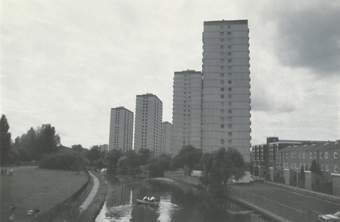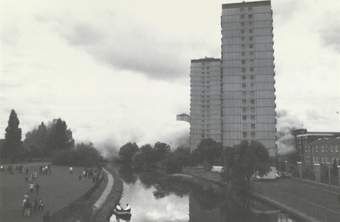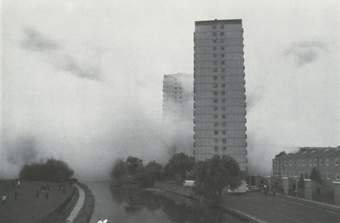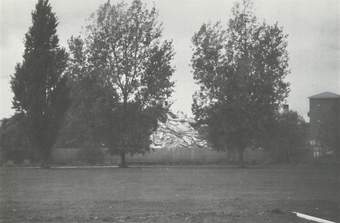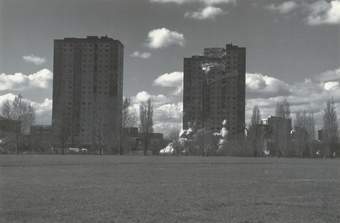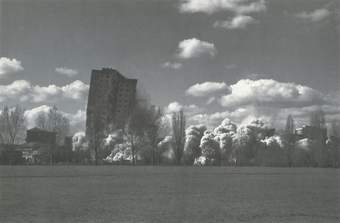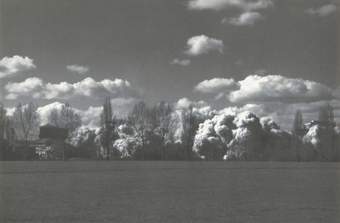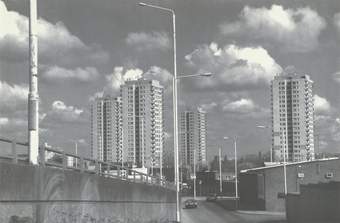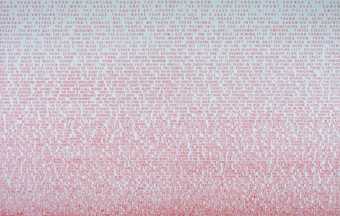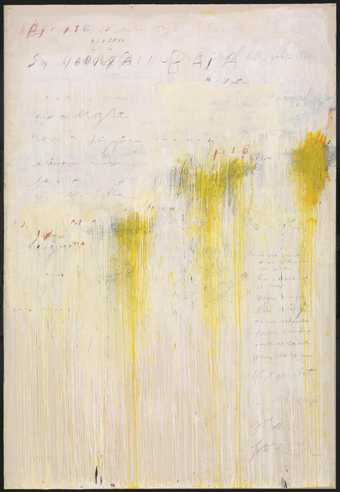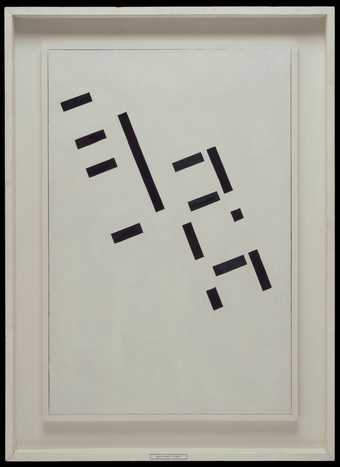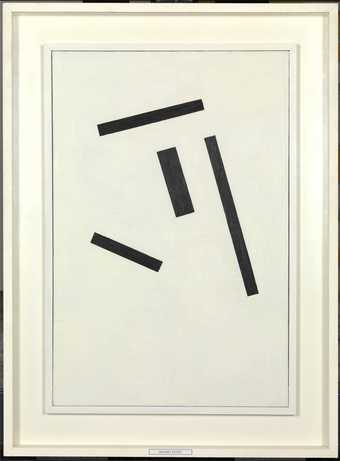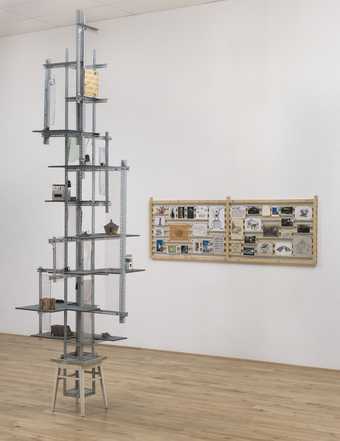
Not on display
- Artist
- Inventory founded 1996
- Medium
- Acrylic paint and marker pen on aluminium
- Dimensions
- Support: 1835 × 1225 mm
frame: 1933 × 1325 × 90 mm - Collection
- Tate
- Acquisition
- Purchased 2002
- Reference
- T07839
Summary
Inventory is a group of artists, writers and thinkers formed in 1995 as a collective working in interdisciplinary spaces. These include published text, performance in public spaces, fly-posters pasted on the streets, an ongoing research initiative called Inventory Survey Project and finished artworks in sculpture, photography, collage, photocopy, graffiti, video documentary, sound and pirate radio. Since 1995 they have published an experimental journal, Inventory, in which commentary on popular culture, meditations on urban life and arcane literary and philosophical issues jostle with diverse texts found on the streets and an ongoing glossary of ‘phenomena’. Inventory operates from a global, socialist standpoint expressing goals and attitudes reminiscent of the Situationist International, the urban movement set up by French artist Guy Debord (1931–94) in 1957. Situationism calls for an exploration of the city and suburbs for spaces resistant to the dominant culture in order to generate a radical transformation of ordinary, everyday life. In common with this, the members of Inventory take up the voice of the marginalised and silenced members of the community. At the same time they are educated observers conducting a form of ‘anthropological research’ on social groups which they document in video, photographs and text. The paradoxes and potential ironies inherent to this dual position are, they claim, part of their project: ‘The idea was to make an interdisciplinary practice, to look at social aspects of life, and things around us ... We were always going to mix the objective and the subjective, focusing on that “bewitched” spot where, when you look too closely at something, the object-subject relationship gets fused.’ (Quoted in Beck’s Futures 2003, p.1.) While they cite as their ancestors Dada, Surrealism, Walter Benjamin (1892–1940) and George Bataille (1897–1962), their work has much in common with contemporary British conceptual artists such as Stephen Willats (born 1943) and Art & Language, a group with fluctuating membership including Terry Atkinson (born 1942), Michael Baldwin (born 1945) and Mel Ramsden (born 1944).
Found texts and found objects are central to the practice of Inventory. Estate Map, as its title indicates, uses a map of a housing estate, the Marquess Road Estate in Islington, North London. During a period when the estate was undergoing demolition, reconstruction and renaming a member of Inventory passed the sign on Essex Road every day on the way to work. Through age and weathering it had become a recognisably aesthetic object. The disintegration of its surface patterning – a diagrammatic representation of streets, housing blocks and green areas, accompanied by numbers and names – has created a surface of peeling paint and black London grime. Over this, a member of the group has written a rant against the dehumanising aspects of social housing projects:
Look at any map of any city and you will not find many of the large housing projects or estates delineated. This absence can only highlight that the nameless networks linking various blocks of a given complex are not accorded the same value as streets … So our estate map, rather than acting as navigational aid, acts as a jeering guided towards a sobering, perhaps existential, recognition of entrapment; proclaiming as it does – YOU ARE HERE.
(Quoted in Inventory, pp.16–17.)
In 1999 another member, Adam Scrivener, published an article in the journal Inventory outlining the troubled history of the Marquess Road Estate, from its planning stage in the late 1960s to its recent refurbishment in the increasingly gentrified environment of the area. The article also examines the underlying assumptions and dogmas governing attitudes to public housing on the part of architects, local planners, local authorities and central government, offering a more detailed social critique than that provided by the sign.
Further reading
Cream: Contemporary Art in Culture, London 1998, pp.204–7.
Beck’s Futures 2003, exhibition catalogue, Institute of Contemporary Arts, London 2003, one of six individual pamphlets in box.
Inventory, vol.3, no.3, 1999, pp.15–17 and pp.78–91.
Elizabeth Manchester
March 2004
Does this text contain inaccurate information or language that you feel we should improve or change? We would like to hear from you.
Display caption
This artwork is by Inventory, who describe themselves as ‘a collective enterprise set up by a group of writers, artists and theorists’. The group started in 1995 and uses found objects, film, photography and text ‘to look at social aspects of life, and things around us’.
Estate Map was made during the regeneration of the Marquess Road Estate in north London. The social housing development won architectural awards when it opened in the 1970s. By the 1990s concerns about living conditions and crime levels on the estate led to the demolition of over 460 homes. Here Inventory adapts an old map to comment on public housing projects.
Gallery label, August 2018
Does this text contain inaccurate information or language that you feel we should improve or change? We would like to hear from you.
Explore
- architecture(30,960)
-
- townscapes / man-made features(21,603)
-
- signage(467)
- formal qualities(12,454)
-
- defacement(257)
- texture(466)
- decay(254)
- environment / nature(315)
- scientific and measuring(791)
-
- map(110)
- UK countries and regions(24,355)
-
- England(19,202)
- government and politics(3,355)
-
- political protest(361)
- poverty(153)
- urban environment(303)
- contemporary society(640)
- inscriptions(6,664)
-
- artist’s notes(1,553)
You might like
-
Fiona Banner Break Point
1998 -
Cy Twombly Quattro Stagioni: Estate
1993–5 -
Keith Coventry East Street Estate
1994 -
Keith Coventry Heygate Estate
1995 -
Lubaina Himid CBE RA Ankledeep
1991 -
Peter Peri Woodcutter
2008 -
Tamás Kaszás Shanty Tower
2014

